Parisian Gnocchi with Tomato Butter Sauce
We may earn a commission from recommended products, at no extra cost to you. See Disclosure.
INGREDIENTS
- Gnocchi:
- 7 tablespoons/100 grams unsalted butter
- 1 teaspoon Dijon mustard
- 1 teaspoon salt
- 1 cup water
- 1 ½ cups/180 grams all-purpose flour
- ¾ cup/80 grams finely grated Parmesan
- 3 large eggs, plus 1 egg yolk
- Tomato butter sauce:
- ½ pint cherry tomatoes, halved
- 3 garlic cloves, thinly sliced
- A handful of fresh basil leaves
- ¼ cup dry white wine
- 7 tablespoons/100 grams unsalted butter
INSTRUCTIONS
- In a medium saucepan, combine the butter, mustard, salt, and water. Heat over medium until the butter melts and the mixture is just shy of boiling.
- Add the flour all at once, stirring vigorously with a wooden spoon. Cook, stirring constantly, until the dough pulls away from the sides of the pan, about 2 minutes.
- Transfer the dough to a stand mixer fitted with the paddle attachment. Mix on low speed for a few minutes to cool slightly.
- Gradually add the Parmesan and eggs, one at a time. The dough may separate at first but will come together into a smooth, glossy paste. The consistency should resemble thick choux pastry—soft yet pipeable. If too stiff, mix in another egg.
- Transfer the dough to a piping bag and refrigerate for 30 minutes.
- Lightly flour a work surface. Pipe long ropes of dough, then use a knife to cut into small, bite-sized pieces. Toss lightly in flour and transfer to a parchment-lined tray. Freeze until ready to cook.
- In a large skillet, heat a drizzle of olive oil over medium heat. Add the garlic and cook until fragrant, about 1 minute. Stir in the cherry tomatoes and cook on low heat until soft and jammy, about 20 minutes.
- Pour in the wine and gently mash the tomatoes with a spoon. Season with salt and stir in the basil.
- Bring a large pot of salted water to a boil. Add the gnocchi in batches, cooking until they float, about 3 minutes. Use a slotted spoon to transfer them directly into the sauce.
- Stir in the butter, allowing it to melt and emulsify into the sauce. Toss gently to coat the gnocchi in the glossy tomato butter. Serve immediately, garnished with extra basil and Parmesan. Enjoy with a glass of chilled white wine.
RECIPE NOTES
MY NOTES
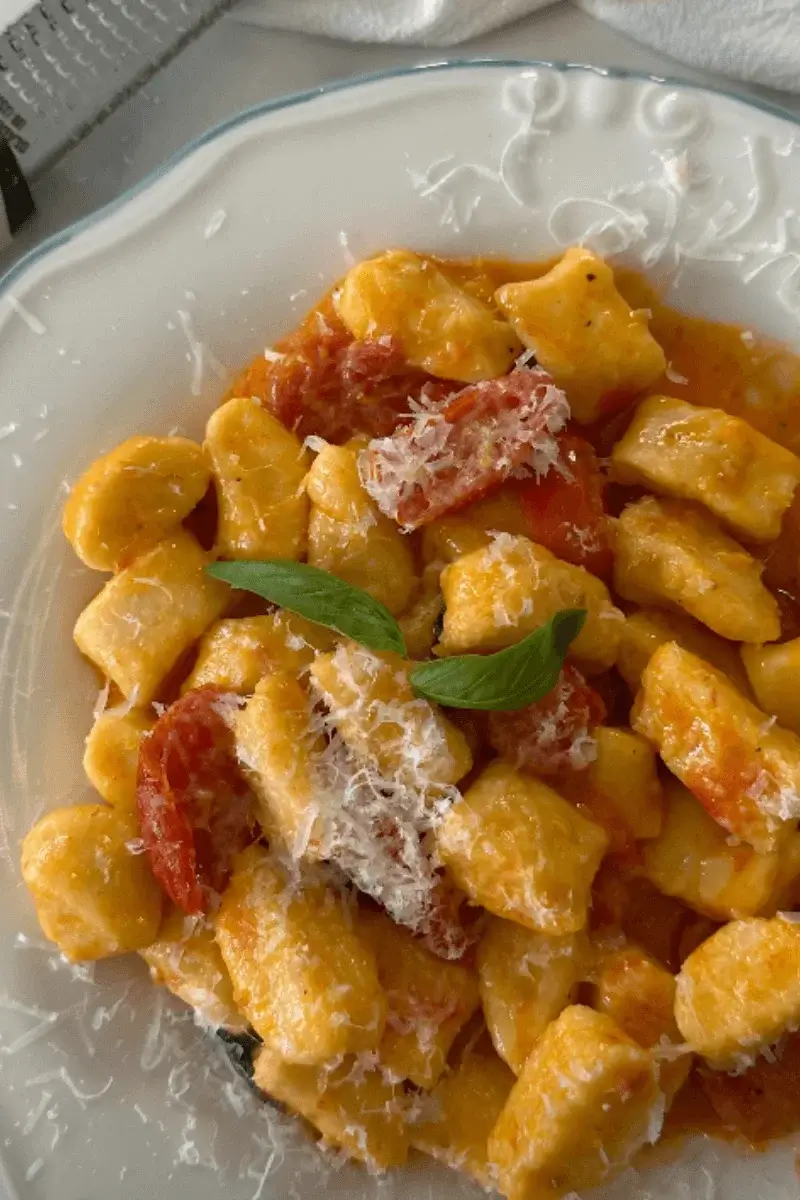
FAQ
What makes Parisian gnocchi different from traditional gnocchi?
Parisian gnocchi is made from pâte à choux dough instead of potatoes, giving it a lighter, more airy texture compared to traditional potato-based gnocchi. The dough is similar to what is used for cream puffs or éclairs and is prepared by cooking flour with butter and water before incorporating eggs and cheese. Unlike traditional gnocchi, which is typically rolled and cut by hand, Parisian gnocchi is piped and cut into small pieces. It is then boiled until it floats and can be served immediately or pan-seared for a crispier exterior. The result is a delicate, pillowy gnocchi with a soft, melt-in-your-mouth texture.
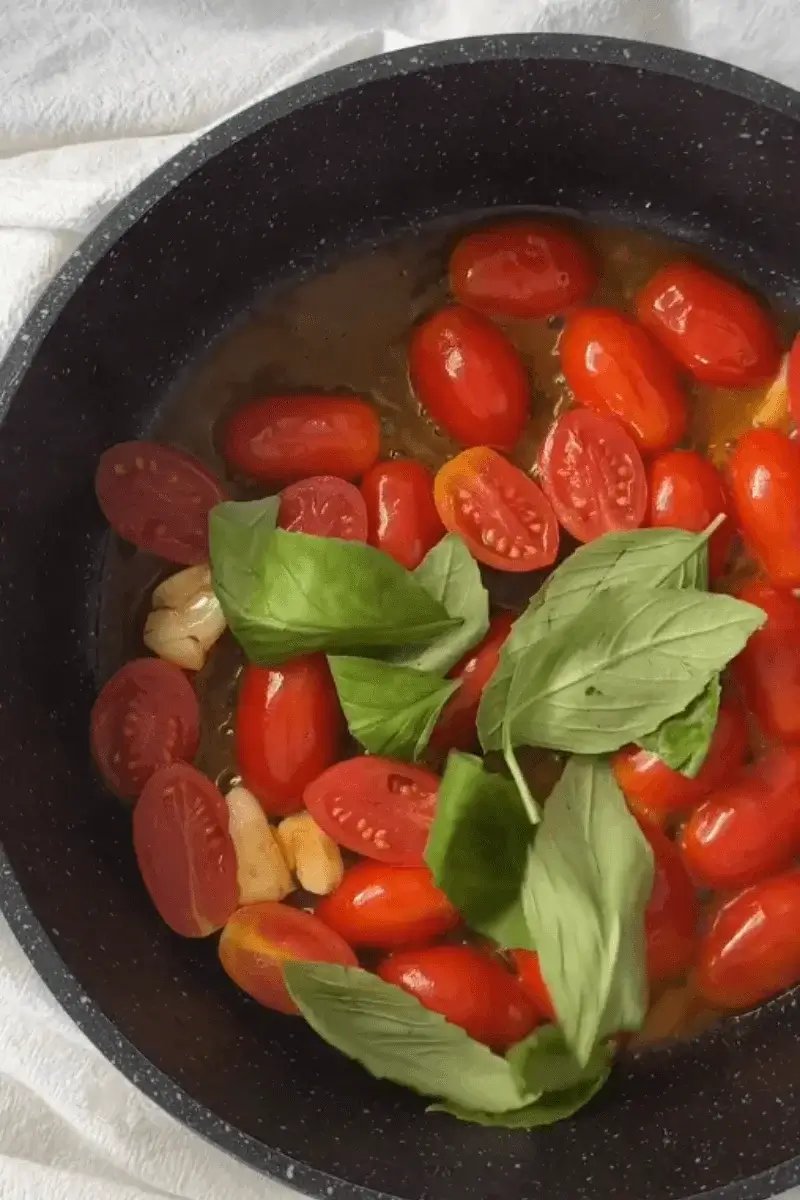
Can I make Parisian gnocchi ahead of time?
Yes, Parisian gnocchi can be made ahead of time. After cutting the gnocchi into small pieces, you can freeze them on a parchment-lined tray until firm, then transfer them to an airtight container or freezer bag. They can be stored in the freezer for up to a month. When ready to cook, they can go straight from the freezer into boiling water. Alternatively, you can cook the gnocchi in advance, let them cool, and store them in the refrigerator for up to two days. To reheat, briefly sauté them in a pan with butter or olive oil until heated through.
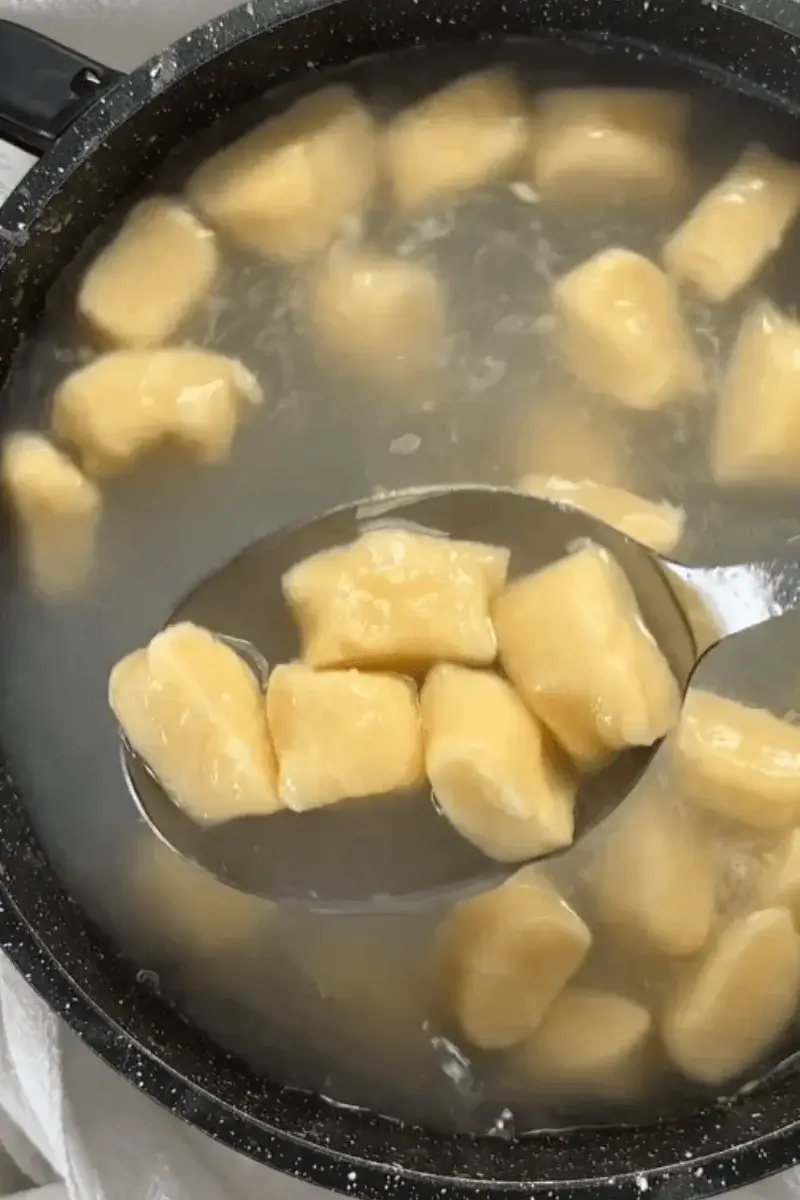
What’s the best way to store and reheat Parisian gnocchi?
If storing uncooked gnocchi, freeze them in a single layer on a tray until firm, then transfer them to an airtight container. Cooked gnocchi should be cooled and stored in an airtight container in the refrigerator for up to two days. To reheat, pan-fry them in butter or olive oil over medium heat until golden and crisp. Avoid microwaving, as it can make the gnocchi rubbery. If reheating in a sauce, warm the sauce separately and gently toss the gnocchi in until heated through. Parisian gnocchi retains its texture well when pan-seared after refrigeration.
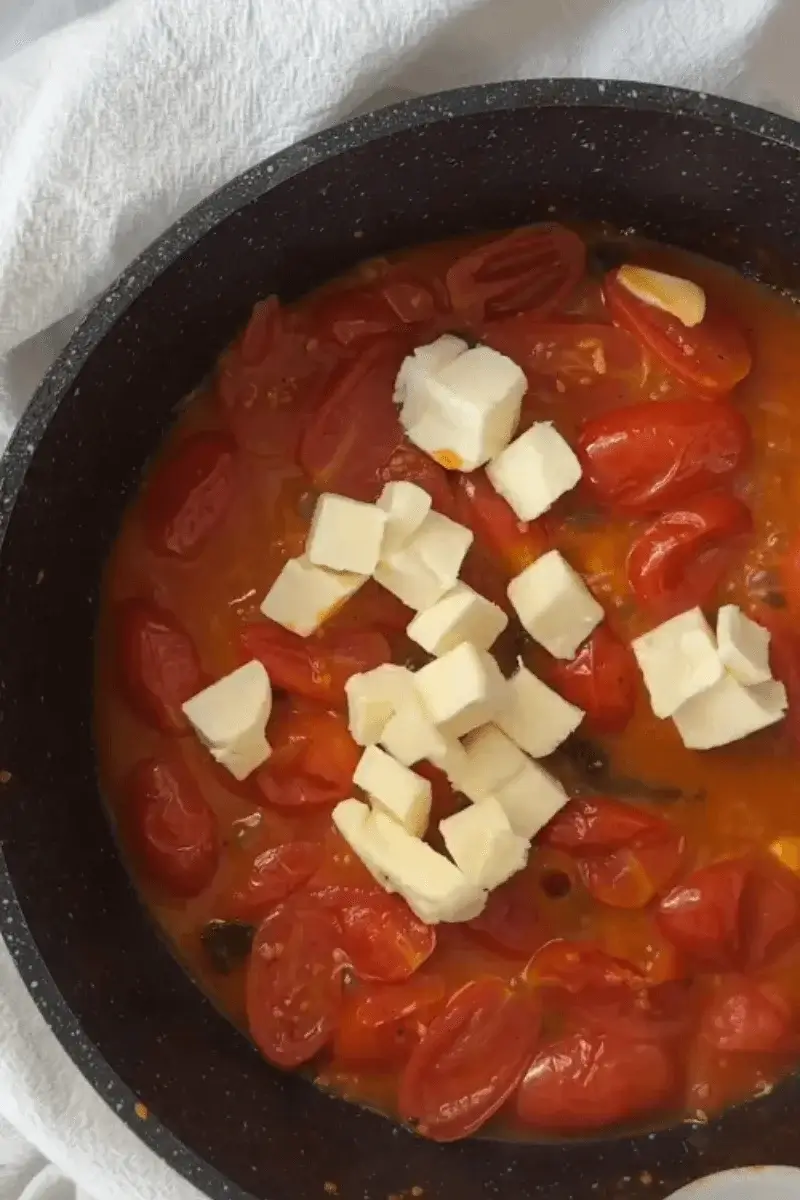
Do I have to freeze the gnocchi before cooking?
Freezing is not required, but it helps firm up the dough, making it easier to handle. Freshly piped and cut gnocchi can go directly into boiling water, but they may be slightly softer and more delicate. Freezing them for at least 30 minutes helps them hold their shape better during cooking. If making a large batch, freezing prevents them from sticking together. Once frozen, they can be cooked straight from the freezer without thawing. This method also allows for easy meal prep, as you can store portions in the freezer and cook them as needed.
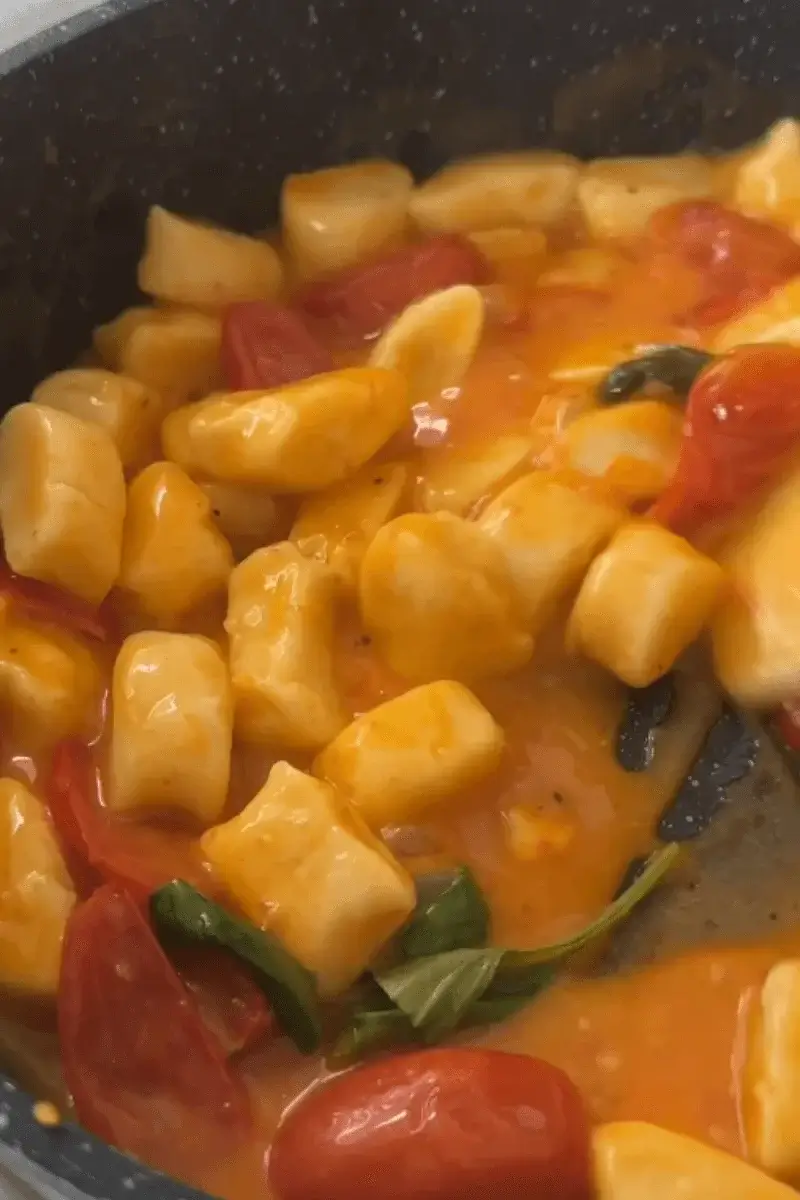
Can I pan-fry Parisian gnocchi instead of boiling it?
Yes, but they should be boiled first. Boiling ensures they are fully cooked and light on the inside. After boiling and draining, they can be pan-fried in butter or olive oil over medium-high heat until golden and crispy. This method creates a contrast between a crispy exterior and a soft, airy interior. If you want extra crispiness, let them cool before pan-frying. This step also helps prevent sticking. Pan-fried Parisian gnocchi pairs well with browned butter, herbs, or a light cheese sauce. Avoid frying raw dough, as it won’t cook evenly and may be too dense.
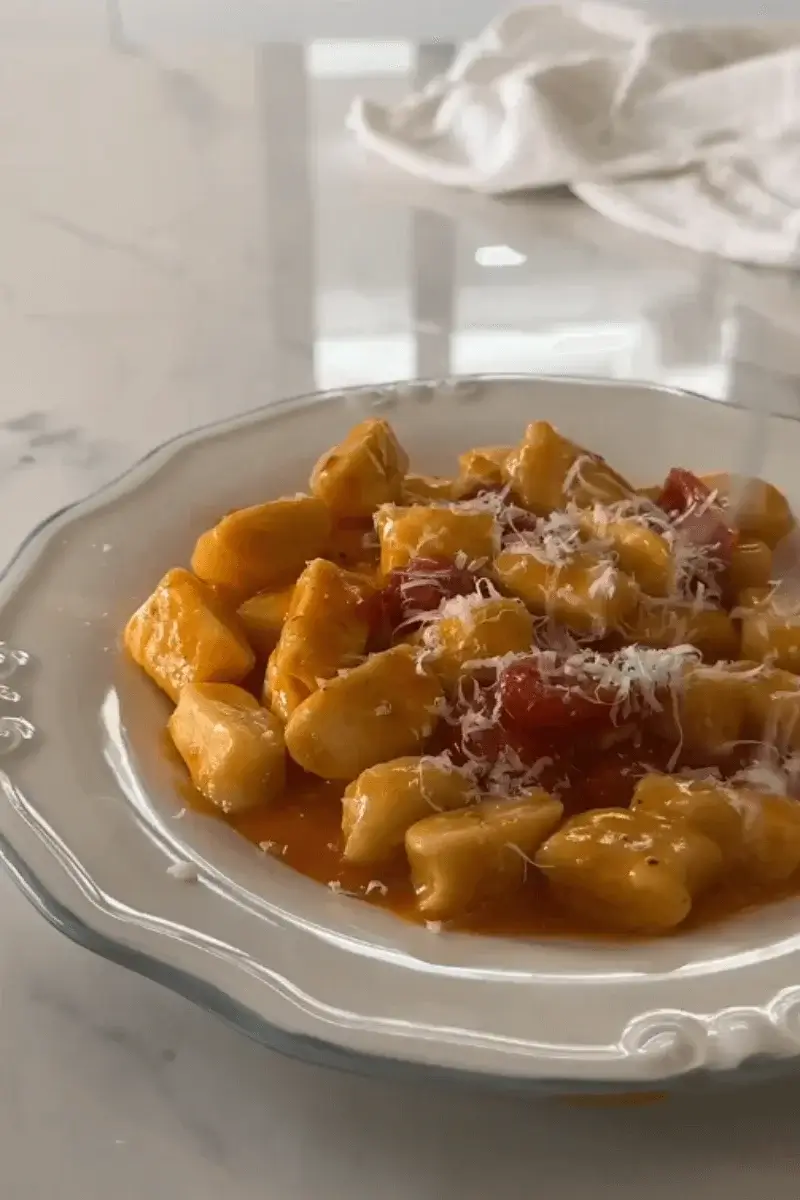
What type of sauce pairs best with Parisian gnocchi?
Parisian gnocchi pairs well with a variety of sauces, from rich and creamy to light and herbaceous. A classic choice is a butter-based sauce, such as brown butter with sage, which enhances its delicate texture. Tomato-based sauces, like a cherry tomato and garlic butter sauce, provide a bright and fresh contrast. Cream-based sauces, such as a Parmesan cream or a light béchamel, complement the cheese in the gnocchi. Pesto also works well, adding a fresh and aromatic element. Since Parisian gnocchi is already rich, it’s best paired with well-balanced sauces that enhance rather than overpower its flavor.
How do I know if my dough has the right consistency?
The dough for Parisian gnocchi should be smooth, soft, and pipeable but not too runny. It should hold its shape when piped and cut but still be light and airy. If the dough is too thick, the gnocchi will be dense; if too runny, it will be difficult to shape. To check consistency, lift a spoonful of dough—it should fall slowly in a thick ribbon. If too stiff, mix in a small amount of beaten egg. If too loose, let it rest in the refrigerator to firm up slightly. The right consistency ensures a tender, pillowy final texture.
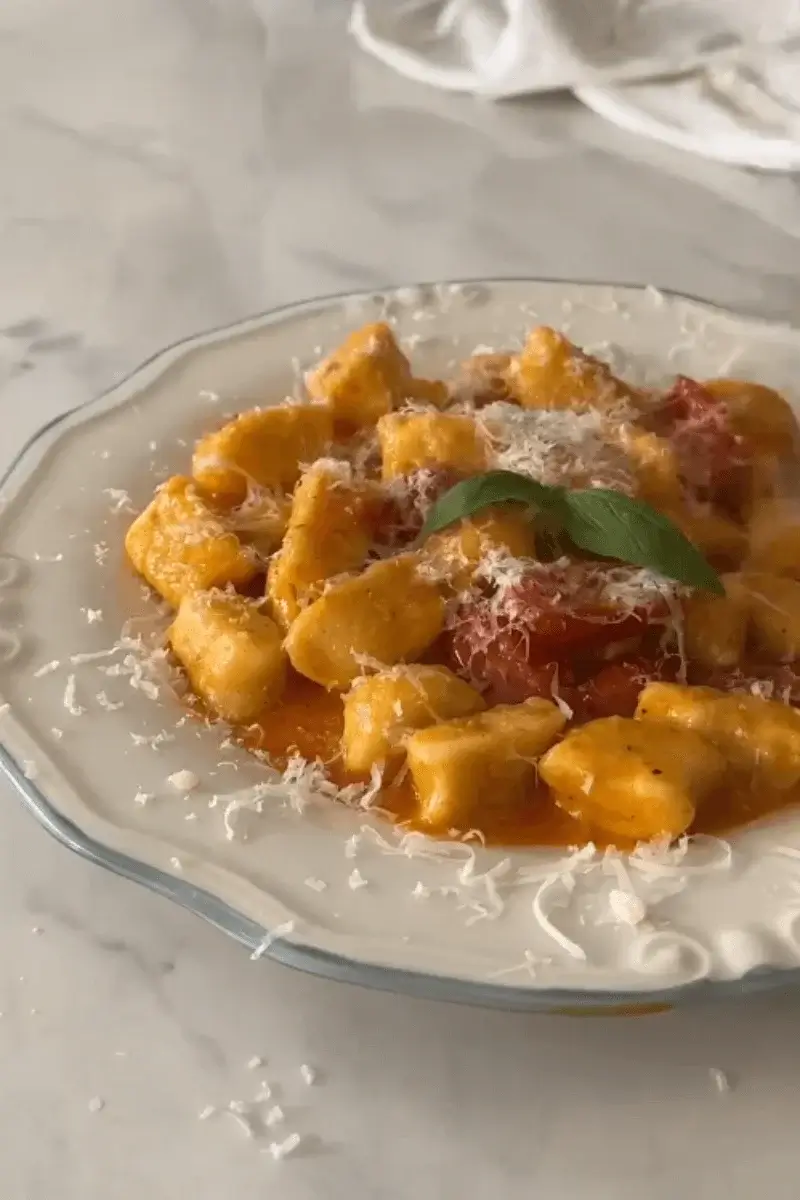
Is it possible to make Parisian gnocchi gluten-free?
Yes, but it requires modifications. Traditional all-purpose flour can be replaced with a gluten-free flour blend that contains a mix of rice flour, potato starch, and xanthan gum for structure. Since pâte à choux relies on gluten for elasticity, the dough may be slightly more delicate. Some recipes use a mix of tapioca starch and almond flour for better binding. Cooking times remain the same, but the texture may be slightly different—lighter and less chewy. It’s best to experiment with small batches to find the right flour combination that maintains the classic Parisian gnocchi texture.
What wine pairs well with Parisian gnocchi?
The best wine pairing depends on the sauce. If serving with a butter or cream-based sauce, a crisp white wine like Chardonnay or Viognier balances the richness. A light-bodied Pinot Grigio or Sauvignon Blanc pairs well with herb-based sauces like pesto. For tomato-based sauces, a medium-bodied red wine like Chianti or Pinot Noir provides a good balance of acidity and fruitiness. If pan-frying the gnocchi for a crispier texture, a sparkling wine like Prosecco adds a refreshing contrast. The goal is to complement the dish’s delicate, buttery flavors without overpowering them.

